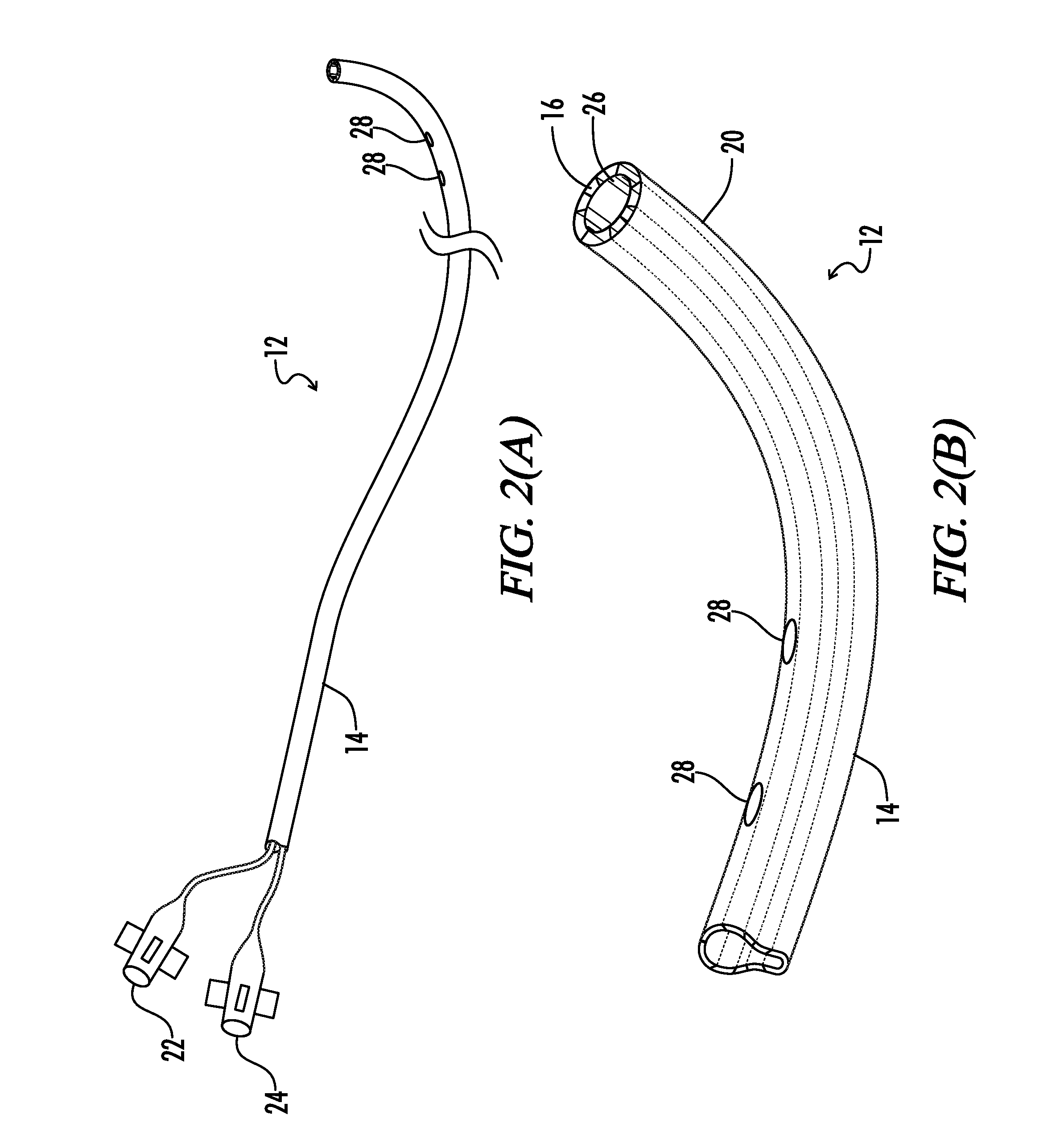Catheter with Gills
a catheter and gill technology, applied in the field of catheters with gills, can solve the problems of catheters being more likely to block or limit blood flow, catheters may restrict or fully block the flow of blood, and inducing heart myocardial ischemia
- Summary
- Abstract
- Description
- Claims
- Application Information
AI Technical Summary
Benefits of technology
Problems solved by technology
Method used
Image
Examples
Embodiment Construction
[0018]The present invention is directed toward a new family of guide catheters, such as coronary guide catheters, designed to improve upon existing guide catheters by making them more versatile and multipurpose while improving their safety and efficiency of use. The invention uses designs that employ different arrangement mechanisms to integrate orifices that are used to allow uninterrupted blood flow into the artery being accessed. The invention is composed a number of specific catheter designs that accommodate blood flow to the artery from each catheter's tip region while the catheters are in service.
[0019]The present guide catheters with gills have one or more of the following improvements or innovations integrated into the catheter: modified orifices, orifice regions, and or dye injection passages with features that enable the opening or closing of the orifices. These innovations are directed toward delivering the tracer dye at the very tip of the catheter guide with gills at al...
PUM
 Login to View More
Login to View More Abstract
Description
Claims
Application Information
 Login to View More
Login to View More - R&D
- Intellectual Property
- Life Sciences
- Materials
- Tech Scout
- Unparalleled Data Quality
- Higher Quality Content
- 60% Fewer Hallucinations
Browse by: Latest US Patents, China's latest patents, Technical Efficacy Thesaurus, Application Domain, Technology Topic, Popular Technical Reports.
© 2025 PatSnap. All rights reserved.Legal|Privacy policy|Modern Slavery Act Transparency Statement|Sitemap|About US| Contact US: help@patsnap.com



